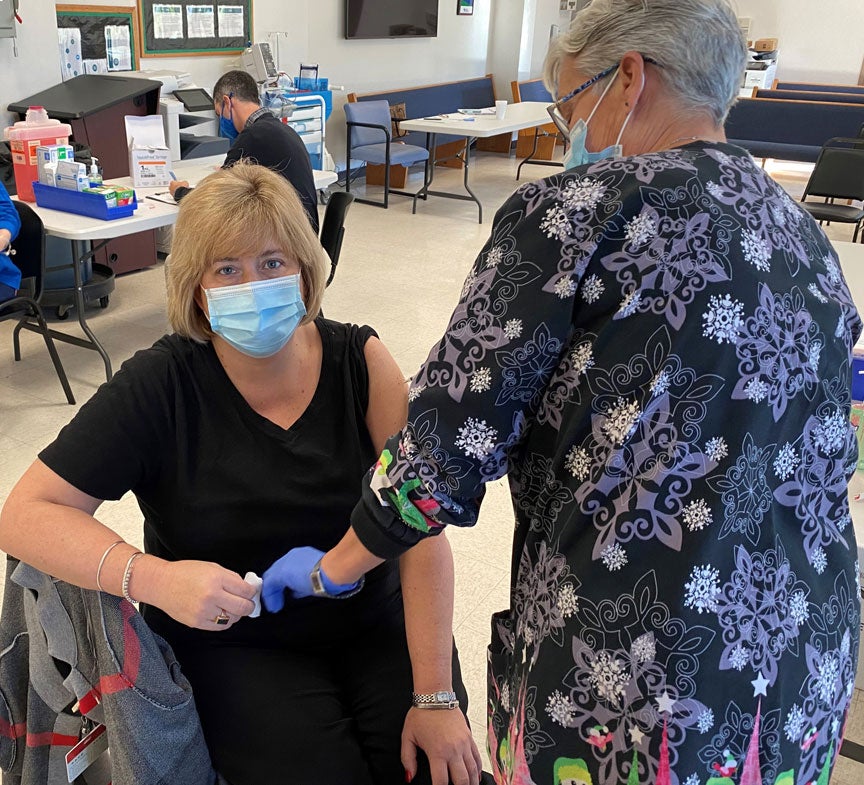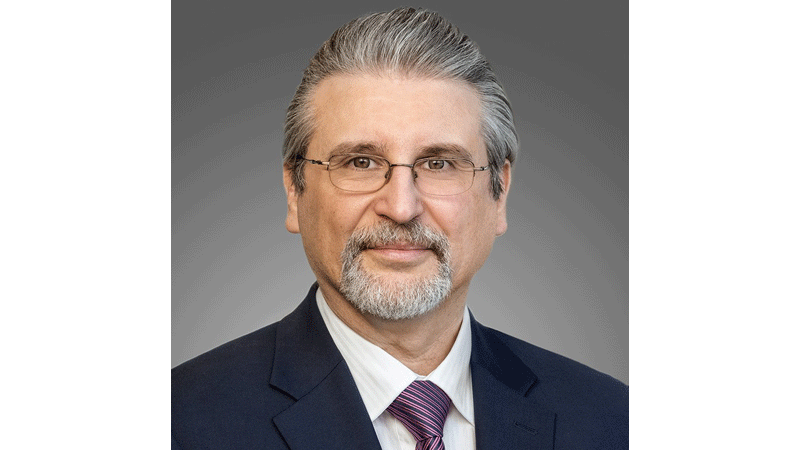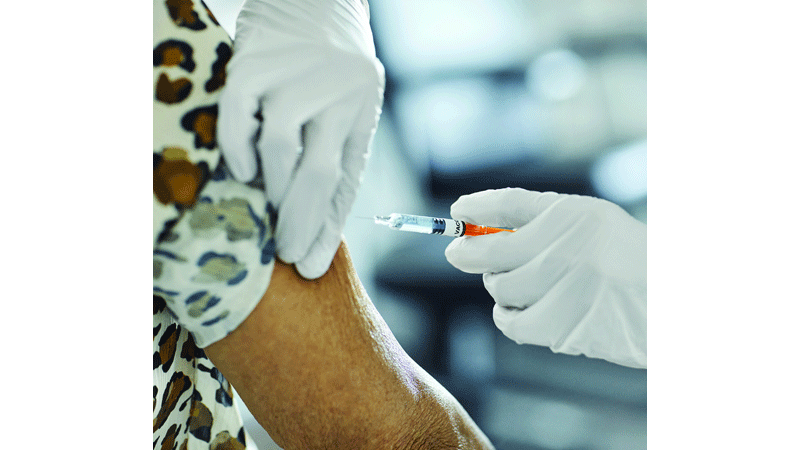Vaccine optimism tempered by COVID-19 surge
Published 6:13 pm Tuesday, December 29, 2020

- Bon Secours Southampton Medical Center began distributing the COVID-19 Moderna vaccine to frontline health care workers on Dec. 29. Kim Marks, president of Southampton Medical Center, receives the first dose of her vaccine administered by Laurie Ross, vice president of nursing. “I am proud to be part of the Bon Secours ministry and that Southampton Medical Center is able to provide vaccinations for all staff,” said Marks. Jenna Green, a spokeswoman for Bon Secours said, “We are following the CDC's recommendations and will begin by vaccinating associates with the greatest likelihood of delivering care to COVID-19 patients. These associates work in high-risk areas such as the ICU, ED and COVID-19 cohort units. However, we are working quickly to vaccinate all of our associates as soon as possible.” -- Submitted
|
Getting your Trinity Audio player ready...
|
As staff members at Hampton Roads and Western Tidewater region hospitals have begun receiving the Pfizer-BioNTech COVID-19 vaccine and the Moderna vaccine has started to arrive at hospitals, there has been a sense of cautious optimism tempered by a surge in cases, hospitalizations and deaths from the virus.
“It’s been a long nine months — tough to believe it’s been nine months,” said Peninsula-based Riverside Health System president and chief operating officer Dr. Mike Dacey. “But I would say it was very, very uplifting. … There’s still a long way to go, but it’s the beginning of the end.”
The recent surge across the state and Hampton Roads region has caused COVID-19 cases to double in the last three weeks at Riverside, and Dacey expects that current total to double before the end of the year. Virginia had 4,652 new cases reported Dec. 23, the most since the start of the coronavirus pandemic, with 2,586 hospitalized with confirmed COVID-19 or pending COVID-19 cases.
The Western Tidewater Health District, like the rest of Virginia, has seen a sizable uptick in cases, hospitalizations and deaths due to COVID-19. There have been 6,758 cases, 365 hospitalizations and 176 deaths in Suffolk, Franklin, Southampton County and Isle of Wight County combined. From Dec. 1-23, there have been 1,420 positive COVID-19 cases — averaging just over 59 cases per day — 91 hospitalizations and 12 deaths.
For Bon Secours, the reaction to the vaccine is also positive.
“It was just a reaction of hope, of relief and of fear, because it’s a very new process,” said Darlene Stephenson, Bon Secours’ chief operating officer.
State health commissioner Dr. Norman Oliver said in a Dec. 18 interview that he is excited for frontline care workers to begin getting the vaccine.
“They’ve been at it now for 10 months, working very diligently to protect us and treat us if we’ve gotten infected with COVID-19,” Oliver said, “and now we have a way of providing them with protection, and it’s very needed so that they’re available for us.”
Vaccine rollout — when and how much
Oliver said the distribution of the Pfizer vaccine to healthcare workers has gone well so far, and that the state Department of Health has been planning for months to secure the ultra-cold storage needed across the state.
When the state received the 72,125 doses it was allotted in the initial shipment, it was able to distribute them to 18 locations around the state, including Sentara Healthcare, Riverside Health System and Bon Secours, all with hospitals in Hampton Roads.
Sentara Norfolk General Hospital received 11,700 doses of the Pfizer vaccine last week, while Riverside received 2,875 doses of the Pfizer vaccine and Bon Secours received just under 3,000 doses of it. Riverside received its initial shipment of the Moderna vaccine Dec. 22, and Sentara Vice President of Clinical Effectiveness Mary Morin said it was to receive another 20,800 doses of the Moderna vaccine Dec. 21.
Pfizer’s vaccine requires two doses 21 days apart, while Moderna’s requires two doses 28 days apart. Each hospital system that gets a first dose of a vaccine will get the same amount of a second dose of each vaccine.
“We are currently continuing to administer the Pfizer vaccine to healthcare workers this week,” said Cindy Williams, Riverside vice president and chief pharmacy officer, in a statement, “but the Moderna vaccine will be used for our scheduled healthcare worker clinics over the next two weeeks.”
Stephenson said it was to get the Moderna vaccine just before Christmas and will be able to vaccinate all of its staff across its hospital system — at Maryview Medical Center in Portsmouth, DePaul Medical Center in Norfolk, Southampton Medical Center and Mary Immaculate Hospital in Newport News. Bon Secours also has a health center in Harbour View in Suffolk, where it has proposed a new hospital.
Sentara has said there would be ample vaccine for all of its healthcare workers.
Stephenson said the Moderna vaccine would be used at Bon Secours’ more far-flung locations due to the cold storage requirements of the Pfizer vaccine, as Moderna does not have to be stored at temperatures as cold as Pfizer’s.
The state health department announced late last week that it would be getting fewer vaccine doses than originally planned — 370,650 doses this month from Pfizer and Moderna instead of the 480,000 doses it had expected. The state placed an order for 146,400 doses of the Moderna vaccine that has begun to ship after receiving emergency Food and Drug Administration approval.
Oliver said the state expects to get more of the Pfizer vaccine to go out to residents of long-term care facilities, skilled nursing facilities and assisted living facilities. Between the Pfizer and Moderna vaccines, Oliver said he expects those healthcare workers who want the vaccine will be able to get it by the end of December through mid-January, depending on the supply of the vaccine. The vaccine is not expected to be available to the general public until spring 2021.
Dacey, who expected to get more Pfizer and Moderna vaccines over the past week, said about 1,000 Riverside staff will have been vaccinated in the first two days it had one, and it held a vaccination clinic last weekend in which it vaccinated about 100 people per hour. He is hoping Riverside can vaccinate at least 400 to 500 people per day.
The next in line to get the vaccine, those at long-term care facilities, will get their vaccine from CVS Health and Walgreens through a partnership of those two pharmacy chains and the federal government. Other populations will be phased in to receiving the vaccine.
CVS Health has begun administering the vaccines to more than 40,000 long-term care facilities across the United States, including 874 skilled nursing and assisted living facilities in Virginia beginning Dec. 28. It said it would make up to three visits to each long-term care facility to ensure that everyone who wants the vaccine — those who work there or who live there — can get vaccinated.
Walgreens’ pharmacy team is giving vaccinations to about 800 long-term care facilities in 12 states beginning the week of Dec. 21, and will expand to nearly 3 million residents and staff at 35,000 long-term care facilities who have chosen Walgreens as their vaccine provider.
As with healthcare workers, the vaccine will not be mandatory.
Effectiveness and safety of vaccine
Oliver said the Virginia Department of Health is very confident in the safety and efficacy of the Pfizer and Moderna vaccines.
“I know many people think that the development of these vaccines was rushed,” Oliver said, “but that’s actually not the case.”
Oliver said the technology and science in the vaccines are much more advanced since the last time the U.S. needed to develop vaccines. The technology in the first two vaccines to receive emergency FDA approval has been studied for more than a decade. The vaccines use what’s called messenger RNA, a protein that comes from the virus.
“The use of this in sciences has been studied for more than a decade, so we already had that done in advance of this,” Oliver said, “and we were, therefore, able to package the messenger RNA into a good vehicle within a couple of months after we knew of the genetic makeup of this virus back in January.”
Oliver said the clinical trials of both vaccines, in which more than 70,000 people participated, showed them to be safe and effective vaccines. He said they have undergone rigorous scientific review, and then the FDA’s advisory committees and Centers for Disease Control and Prevention’s Advisory Community on Immunization Practices — the same review other vaccines get.
He noted the federal government advanced money to the pharmaceutical companies to develop the vaccines and produce them, and Pfizer, specifically, took on the risk of developing and producing a COVID-19 vaccine itself and was able to start producing the vaccine right away, allowing for it to be shipped almost immediately upon approval.
“I don’t think it was rushed,” Oliver said. “I think it went through appropriate review and that’s why we feel that it’s safe and we know that it’s effective.”
The Pfizer and Moderna vaccines are not traditional ones in which a virus is inactivated and injected into the body, Dacey said, but rather, it is a genetic code that allows the body to produce the protein that can cause the immune response.
The pandemic, as much as it has been unwelcome, has had at least one benefit to it.
“If there’s any advantage to a pandemic, it’s easy to do research because you have a lot of patients, a lot of cases, so it’s easier to enroll people in clinical trials.”
The tens of thousands of people who participated in the trials helped accelerate the development of the pharmaceutical companies’ respective vaccines.
“It would take several years, several seasons of influenza to get that number of people into a trial,” Dacey said, “Because you’ve got millions of people infected, it’s a little bit easier to develop, to enroll the necessary numbers of patients into the clinical trials. … Once all this is over, the dramatic acceleration in this technology, this messenger RNA technology, it’s got implications far beyond infectious disease.
“There are huge implications for cancer treatments, cardiology treatments. This is going to be, really, really, really a catalyst for tremendous growth and great treatments for other diseases in the years to come.”
Dacey noted side effects such as a fever, headache and body aches after receiving the vaccine, and said they could be a little more pronounced in the Moderna vaccine, but he vouched for their safety and effectiveness, as he and other health officials say those are a sign of the body’s immune system at work.
The two-dose vaccines, however, will not be fully effective without people taking the second dose, according to health officials, who have largely been setting appointments for the second vaccine dose at the time the first one is administered. Dacey said Riverside will do the same for first responders when they get vaccinated.
“We’re emphasizing that, after the first dose, a few weeks later you may have 50% immunity protection, but it’s 95% after the second dose,” Dacey said, “and it’s a 100% chance of not getting seriously ill after the second dose.”
Getting the message out
Health officials understand the challenge in securing the buy-in on the Pfizer and Moderna vaccines, as well as any others that will be used over the course of the next several months.
Dacey said about 60% of Riverside’s staff would get the vaccine, up from about 35% a month ago. After its staff gets vaccinated, Riverside plans to work with local health departments to vaccinate first responders.
Stephenson said Bon Secours has worked to keep its staff in the loop about the vaccine process and its safety.
“I think the main question that’s been circulating for the last couple of months is the newness and the rapid timeline around these vaccines,” Stephenson said, “but we’ve helped to communicate very frequently with our team members and just really emphasize that the FDA has followed their processes with the development. It has been expedited, but they’ve followed the same strict quality and safety guidelines as they’ve always followed in the past.”
While hospital officials expect that more than half of their respective staffs will ultimately get the vaccine, they have a harder sell with people who are Black, many of whom have a historical distrust of vaccines and healthcare in general.
“There’s a long history of racial discrimination against many minority populations in this country,” Oliver said. “It’s been shown in terms of the inequities and delivery of health care, experimentation in those communities, dating back to things like the Tuskegee experiment and so on.”
That experiment involved the treatment of syphilis beginning in 1932, according to the CDC, and carried on for 40 years. An advisory panel found that the study participants did not know about the study or its purpose, and were never given adequate treatment for the disease.
Oliver said the health department is working to show that the vaccine has been widely tested in large clinical trials, with those including “about 30% of those tests … from minority communities.”
“It’s safe and effective in those populations as it is in others,” Oliver said, “but more important than just the message that we’re getting out, I think it’s important that the messengers are to be trusted leaders in those communities and we’re working with faith leaders, other community leaders, to help us get that message out to the African-American, Latino and other minority communities. And, in that way, we’ll be able to convince the majority, I believe, of people of color to take this vaccine.
“It’s particularly important because they’re the hardest hit by this pandemic. Deaths and cases in the black and brown communities in the Commonwealth, as in the rest of the country, have been disproportionately high, so it’s important that they take the vaccine to protect themselves, their loved ones and their entire communities.”
In Western Tidewater, 53% of COVID-19 cases reported by race have been among those who are Black.
Dacey said he understands the challenge to convince Black people of the vaccine’s safety and effectiveness.
“I think, particularly in minority communities, the African-American community, the Latino community, that’s particularly important,” Dacey said, “and I think we’re trying to make sure they understand the facts about the vaccine, that it is safe, it is effective — that’s one thing.
“But then also, you need examples, and so we’ve tried as much as possible to have in the messaging of the vaccine to have a diverse group of people message the positive benefits of getting it, that we have representatives from all the different ethnic groups, and nurses and doctors messaging the fact that they plan to get the vaccine and that it is safe, it is effective.”
Tracking who gets the vaccine
As of Dec. 23, nearly 9.5 million doses of COVID-19 vaccine have been distributed across the country, with just more than 1 million doses administered, according to the CDC. The doses distributed are for both the Pfizer and Moderna vaccines, while the doses given reflect Pfizer’s vaccine only, as Moderna’s began shipping its vaccine out this week.
Oliver indicated that some information would be available on the number of people in Virginia who get the vaccine, and indeed, a vaccine dashboard was posted to the VDH website Dec. 23. It includes data on the number of people vaccinated, demographics on age, race and gender of those receiving the vaccine, and the number of vaccines distributed throughout the state. There also will be data on those who have received both doses of the two-dose Pfizer and Moderna vaccines, though with those vaccines having just been rolled out to frontline care workers, no one has yet to receive a second dose.
Through Dec. 22, 19,943 people in Virginia have been vaccinated, including 167 in Suffolk, 110 in Isle of Wight County and four each in Franklin and Southampton County, according to the state health department, which noted it is getting its information on those vaccinated from the Virginia Immunization Information System. Across the state, 227,425 vaccine doses have been distributed through Dec. 22, including 106,300 new vaccine doses.
“We will make publicly available, from just aggregate kinds of numbers, on how we’re doing on vaccinating people,” Oliver said, “keeping a tally of how broadly it’s being administered. We don’t want to give real detailed information. We’ll protect people’s privacy.”
Dacey said now is not the time for people to let down their guard, comparing it to going the length of the field and being on the 10-yard line and not wanting to fumble the ball as the vaccines roll out to larger amounts of people. It has not had to scale back care, and hopes not to do that, as it did in the spring.
“It’s going to be a difficult eight weeks,” Dacey said, “so people need to continue to protect themselves.”
As for when he expects everyone who wants to receive the COVID-19 vaccine will get one?
“I suspect that by mid-summer to late-summer next year,” Oliver said, “we should have vaccinated the majority of people in the Commonwealth who wish to receive this vaccine.”



